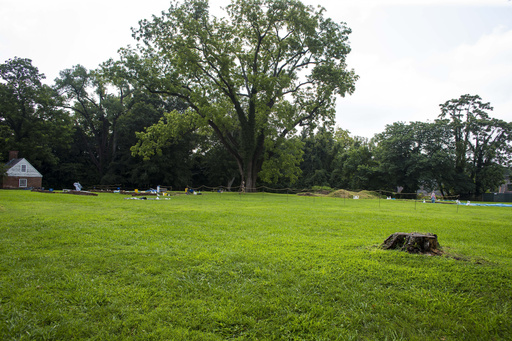Archaeologists in Williamsburg, Virginia are currently uncovering a historically significant ornamental garden that belonged to John Custis IV, a prominent figure in colonial America. This garden, once tended to by enslaved gardeners, served as a symbol of opulence and status for the elite in the 18th century. While Custis is known for various contributions, including being Martha Washington’s father-in-law, the ongoing excavation sheds light on the skilled enslaved individuals who cultivated the land.
The archaeological dig in Colonial Williamsburg, now owned by the living history museum, has revealed elements of the garden such as fence posts, gravel paths, and plant row imprints in the soil. Discoveries like a pierced coin commonly worn for good luck and an earthenware chamber pot used by enslaved individuals provide insights into the daily lives of those who worked in the garden.
One intriguing find was intentional animal burials under fence posts, including chickens and a cow’s foot. These discoveries hint at potential non-European traditions, possibly of West African origin, prompting further research into the enslaved individuals’ lives in that space. Colonial Williamsburg’s efforts in recent years aim to tell a more complete historical narrative, particularly concerning Black Americans’ contributions and experiences in the colonial capital.
The restoration of Custis’ Williamsburg home and garden, known as Custis Square, without surviving maps or diagrams, relies on comprehensive landscape archaeology efforts. The garden, once filled with exotic plants from around the world following Custis’ botanical exchanges with British botanist Peter Collinson, showcased his wealth and horticultural interests. The ongoing investigations aim to learn more about the enslaved individuals who worked in the garden, emphasizing the importance of their stories in colonial history.
